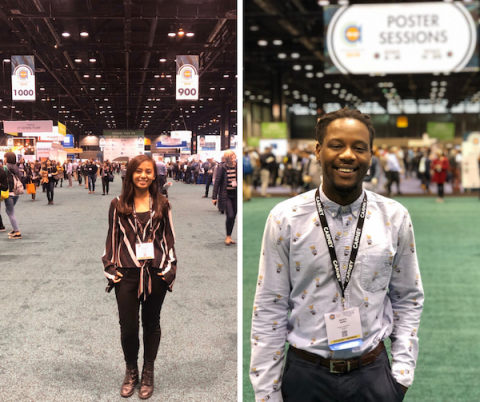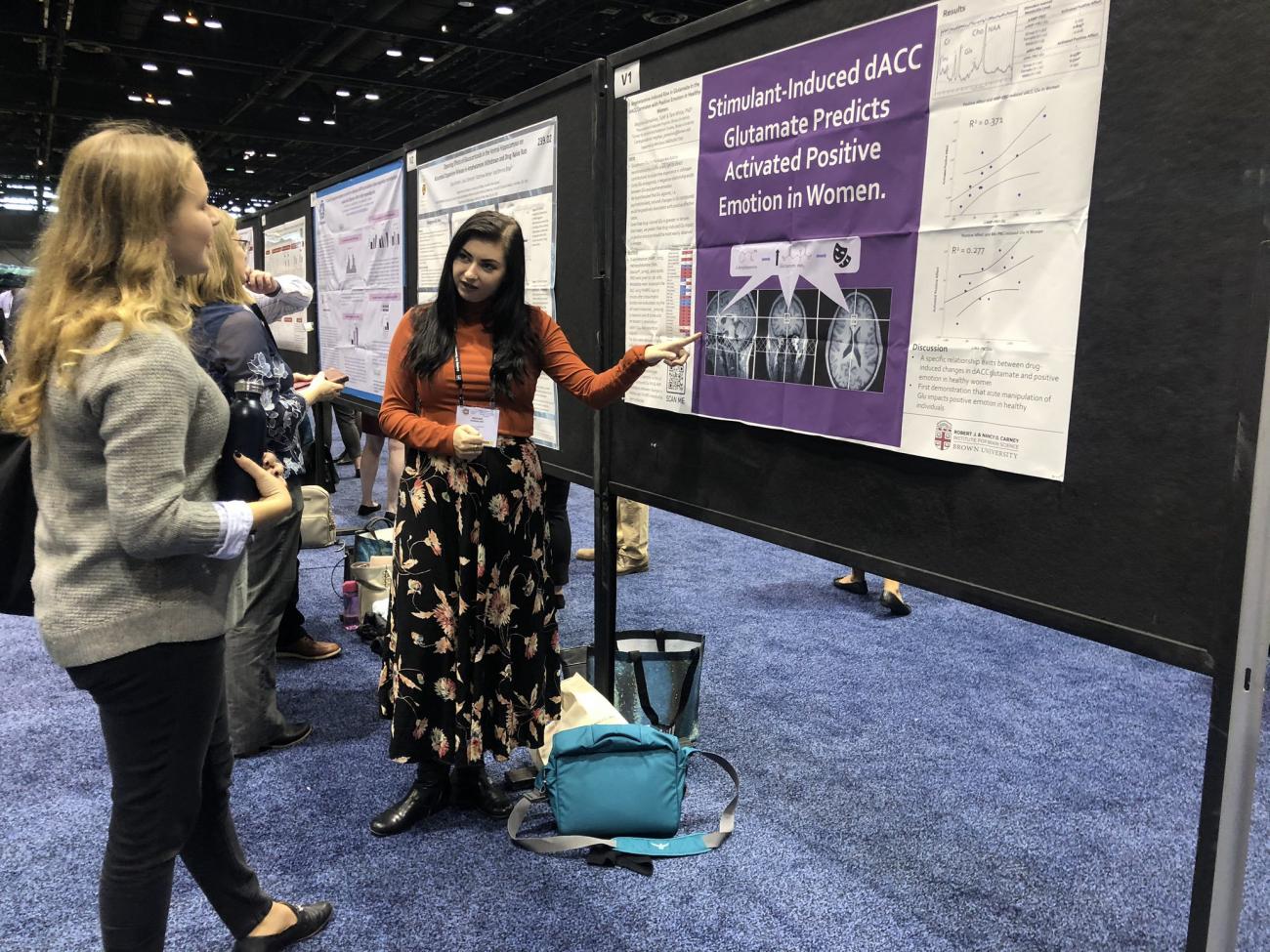
For us, first-year students of Brown University’s Ph.D. Program in Neuroscience, SfN’s 49th Annual Meeting was a remarkable experience that gave us the opportunity to dive into neuroscience, learn from experts, network with scientists from all over the world, and represent and showcase the Brown brain science community.
The conference was particularly special because it was spearheaded by SfN President Diane Lipscombe, who is also the director of Brown’s Carney Institute for Brain Science, professor of neuroscience, and our Ph.D. program advisor. Faculty from Brown’s Department of Neuroscience also attended the conference, as did the entire cohort of first-year students in the Neuroscience Ph.D. program. Being surrounded by the Brown community made the conference a truly unforgettable experience.
The field of neuroscience is extremely interdisciplinary, thus our days were filled with lectures and symposiums that appealed to the interests of all types of neuroscientists—from neurodegenerative disorders and neural excitability, to the neural basis of motivation and the neural circuits involved in addiction. On our first day, for example, we attended Fei-Fei Li’s lecture on “Dialogues Between Neuroscience and Society.” Li, a professor of computer science at Stanford University, challenged us to manifest stewardship in our use of technology and to use technology to help humanity reach its fullest potential. She discussed the endless possibilities of artificial intelligence and how technology is meant to enhance, not replace, parts of the human experience.
We also attended a symposium series about the hippocampus, titled “Opening the Black Box of the Hippocampus: Visualizing Memories in Distinct Cell Types, Microcircuits, and Cellular Compartments.” This symposium consisted of several mini-lectures discussing the many cell types and circuits involved in memory encoding, subcellular compartments in the control of behavior, and recent technological advances used to study hippocampal cell types.
Additionally, we attended a dual perspective session—titled “Does Adult Neurogenesis Occur in the Human Brain?”—which showcased opposing talks on adult neurogenesis research. Surprisingly, the dual perspective session wasn’t as contentious as we thought it might be. It highlighted goals of scientific communication and discussion.

Our afternoons were filled with poster sessions featuring scientists who eagerly shared their work and engaged in scholarly conversation. Several graduate students and fellows from Brown participated in these sessions, showcasing the high caliber of research at Brown. After poster sessions, days ended with a presidential lecture. The last presidential lecture featured Valentina Emiliani from the Institut de la Vision. During her talk, she discussed the revolution of optogenetics and how it has driven possibilities to accomplish discoveries in the field that were unimaginable a decade ago.
Every single lecture, symposium and poster presentation we attended left us with a great amount of knowledge. At the end of each day, there were several SfN-sponsored socials that gave scientists the opportunity to network. The socials were a great way to end the day and form connections with other scientists. SfN’s 49th Annual Meeting was truly an experience to remember, and we are excited for next year’s conference in Washington, D.C.
Cara Borja is a first-year Ph.D. student in the Brown University-NIH Graduate Partnership Program. Bahati Nkera is a first-year Ph.D. student in the Neuroscience Graduate Program at Brown University.